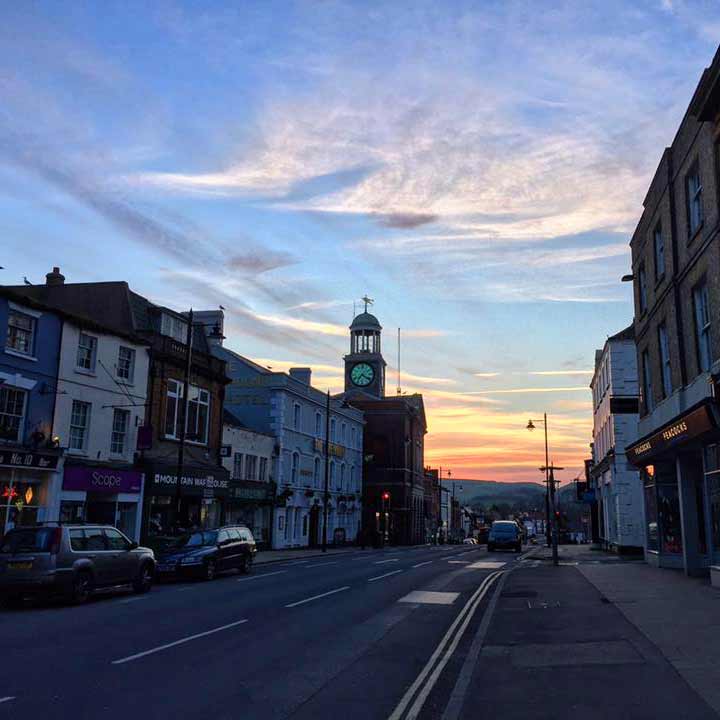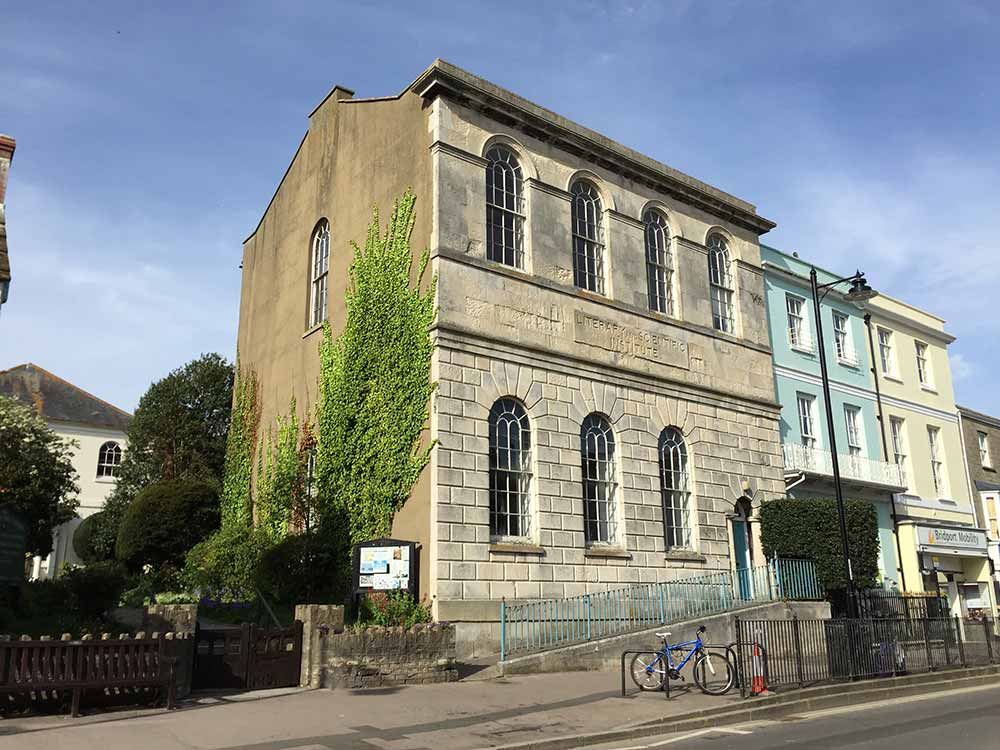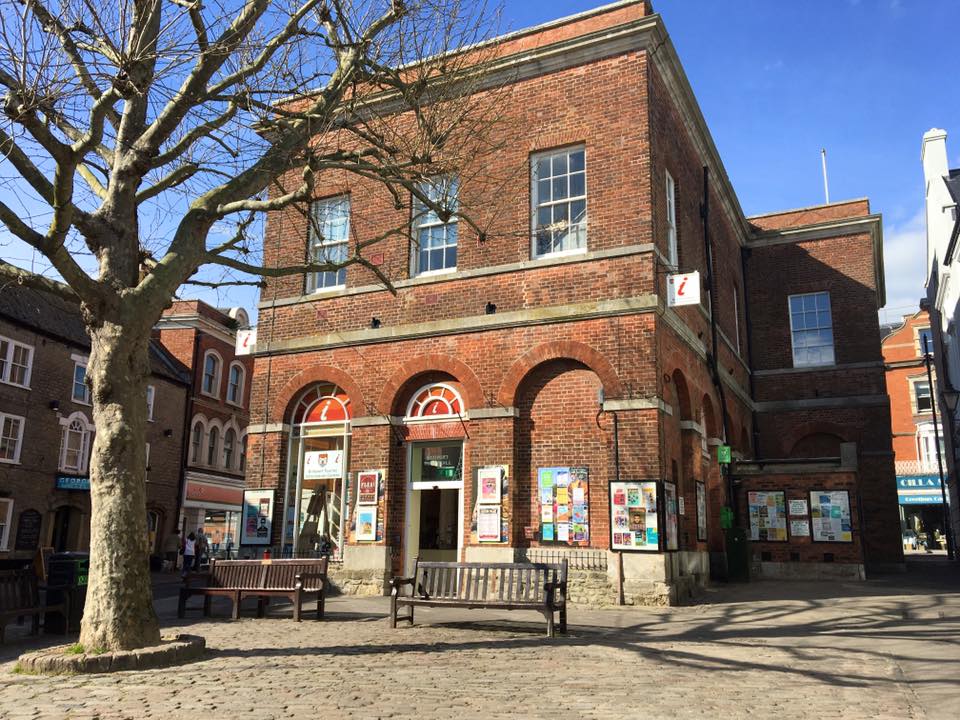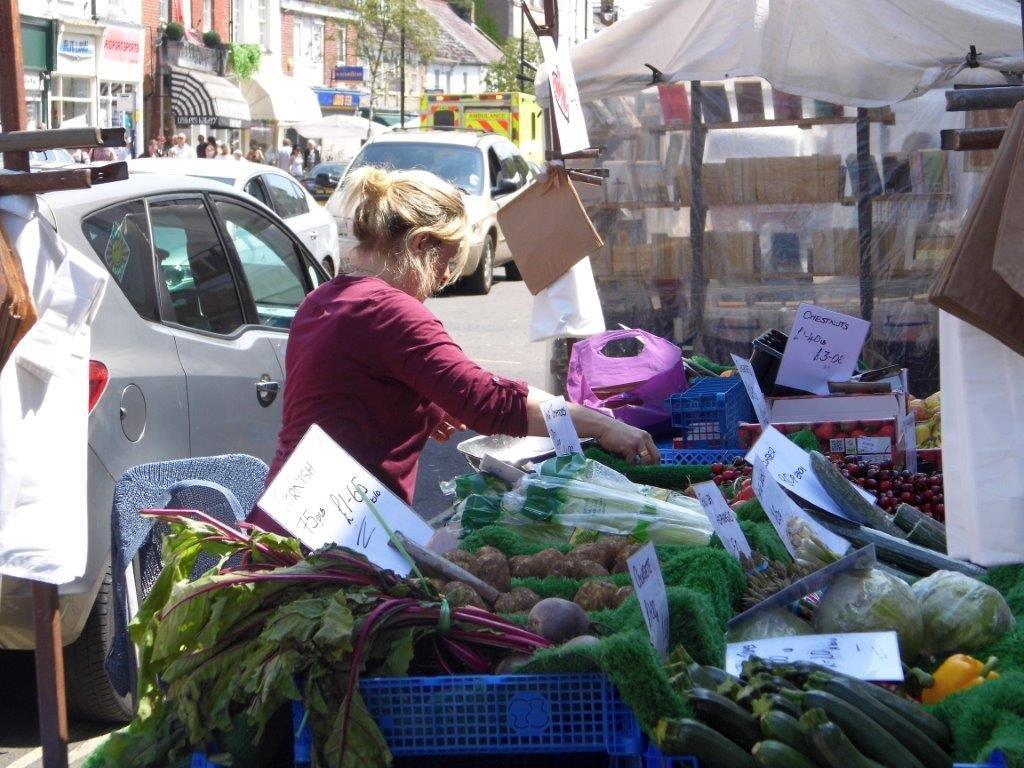Bridport is surrounded by many beautiful hills and rolling countryside. The King of Wessex, better known as Alfred the Great, established it as a fortified burgh in the late 9th Century. In 1253 Henry III made the town a Royal Borough, later confirmed by Elizabeth I and James I.

The predominant industry in the town was rope making and in 1213 King John demanded that Bridport produce ropes and cables, night and day for his army and navy. This industry was later to expand to trade all over the world, including Newfoundland. Today in the 21st century, the rope and net heritage continues through a number of businesses that make fishing,sports and sporting nets, cargo restraints and specialist nets.
The main streets of Bridport are amongst the widest in the west of England . There are over 1000 listed buildings of historical or architectural merit, many of these associated with the rope making industry,
In 1651 Charles II stayed in the town to escape the Cromwellian Army.
The Chantry

The Chantry in lower South Street is the oldest building in Bridport. It is a unique building of historic importance. Built before 1300 it possibly served as a lighthouse for boats sailing up the River Brit and later in the 1400’s was home to a priest, hence the religious link which gave the building its name.
Literary and Scientific Institute

The Bridport Literary and Scientific Institute is situated in East Street and has strong links with the artist Fra Newbery who spent his childhood and youth in Bridport. He was a pupil and teacher at the Bridport School of Art run from the Bridport Literary and Scientific Institute building. He became the Director of the Glasgow School of Art 1885-1918 and was an acclaimed teacher, Charles Rennie Mackintosh being one of his pupils. Fra Newbery left Bridport with a unique legacy of paintings that are on permanent display in the Town Hall.
The Town Hall

Bridport Town Hall is now open again following a major refurbishment supported by the Heritage Lottery Fund. The building is open to the public and please see the dedicated web site www.bridporttownhall.org for times. The building also now hosts the Tourist Information Centre.
The present Town Hall building was built in 1786 at a cost of £2000. It was built on the site of a market house following a fire in 1782.
Bridport Museum

Bridport Museum in South Street dates from the 1600’s. It displays artefacts from Bridport’s rich history including items from the Roman period, and many associated with the rope and net industry. Spinning Yarns the oral history project and the Jurassic Coast are two exhibitions to be found on the ground floor. Textiles, a display of hats and cases of varied ephemera feature on the first floor for 2010.
History of the Town Market

In Saxon times port meant a place of trade, not neccessarily a seaport, whilst the market or “bull ring” was usually a widening of the main street in the town centre – this feature of saxon Bridport can still be seen by the Woodman Inn in South Street.
When King Henry III granted a Charter in 1253, the market gradually moved to a position outside of the Bull Hotel in East Street and to the site of the Town Hall (formerly the site of the Church of St. Andrew). Permanent fixed open stalls with roofs were built opposite the Town Hall. This market area was recorded as The Shambles.
When the Town Hall was completed in 1786, thirty seven butchers’ stalls were included on the ground floor with other trader’s stalls housed on a site which is now Bucky Doo Square. The butchers tradition continues in the 21st century with a long established butchers shop sited on the northern side of the ground floor of the Town Hall.